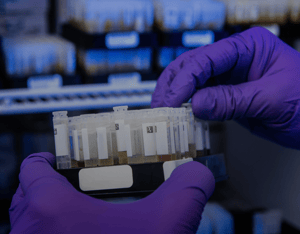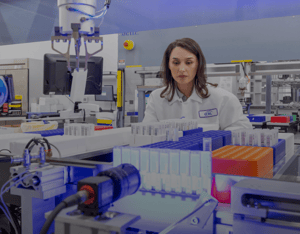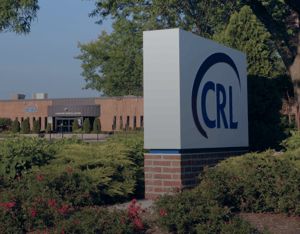Human Immunodeficiency Virus, DBS
General Information
| Name | Information |
|---|---|
| Code: | B197 |
| Test Name, Short: | HIV , DBS |
| Matrix: | Dried Blood Spot (DBS) |
| Turnaround Time: | Daily |
| Analytical Method: | This test uses HIV-1 antigens, including inactivated, purified HIV-1 viral lysate proteins, which are coated onto the wells of microwell plates, for the detection of antibodies against HIV-2 |
| Reportable - Test Results Type: | Calculations must be made separately for each stripholder. Results are calculated and analyzed the same for serum, plasma, dried blood spots, and OraSure® HIV-1 specimens. A test specimen is nonreactive if specimen absorbance is less than the cutoff value. A test specimen is reactive if specimen absorbance is greater than or equal to the cutoff value. Specimens with absorbance values less than the cutoff value are considered nonreactive by the Avioq HIV-1 Microelisa System criteria and may be considered negative for antibodies to HIV-1. No further testing is required. 2. Specimens with absorbance values greater than or equal to the cutoff value are considered initially reactive by the Avioq HIV-1 Microelisa System criteria but before interpretation, the specimen should be retested in duplicate. If either duplicate retest is reactive, the specimen is considered repeatedly reactive. 3. Initially reactive specimens that do not react in both of the duplicate repeat tests are considered negative for antibodies to HIV-1. 4. If the specimen is repeatedly reactive, the probability that antibodies to HIV are present is high, especially in specimens obtained from subjects at increased risk for HIV infection.13 In addition, persons who have participated in an HIV vaccine study may develop antibodies to the vaccine and may or may not be infected with HIV. In most settings it is appropriate to investigate repeatedly reactive specimens by additional, more specific tests. Specimens found repeatedly reactive by ELISA and positive by additional, more specific tests are considered positive for antibodies to HIV-1. Clinical correlation is indicated with appropriate counseling, medical evaluation and possibly additional testing to decide whether a diagnosis of HIV infection is accurate. If interpretation of results of specimens found repeatedly reactive by ELISA and negative by additional more specific tests is unclear, further clarification may be obtained by testing another specimen obtained three to six months later. |
| Units - Conventional: | The cutoff is determined by adding 0.270 O.D. units to the mean absorbance of the Negative Calibrator. A patient whose value is equal to or greater than the cutoff is considered initially reactive. Specimens with an absorbance value less than the cutoff are considered non-reactive. Initially reactive specimens are repeated in duplicate for HIV confirmation analysis. If one or both repeat results reactive, the sample is confirmed by GS Biorad HIV-1Western Blot for DBS. Initially reactive specimens that do not react in both of the duplicate repeat tests are considered negative for antibodies to HIV-1. |
Specimen Information
| Name | Information |
|---|---|
| Min. Volume: | 4-6 drops Fingerstick blood |
| Rejection Criteria: | • Quantity not sufficient, i.e. blood drops do not fill ADx100 collection square • Clotted specimen due to prolonged collection • Blood drop placement outside the collection square • Over saturation of blood in the collection square Or Improper labeling of card |
| Collection Instructions: | See instructions |
| Collection Patient Prep: | NA |
| Container: | Dried Blood Spot on an ADX-100 card. |
| Shipping Temperature: | Ambient |





